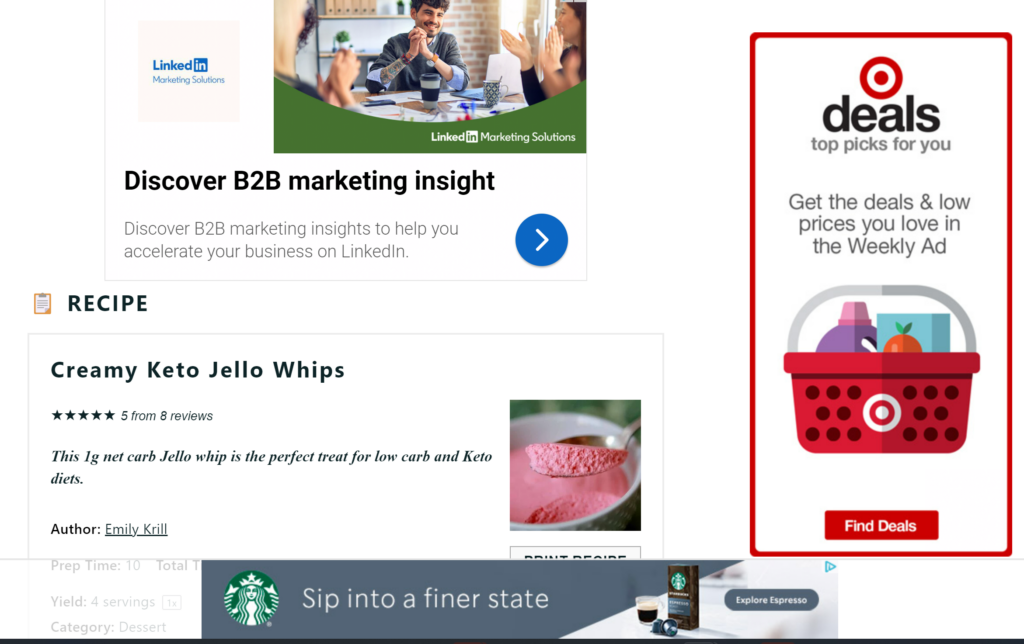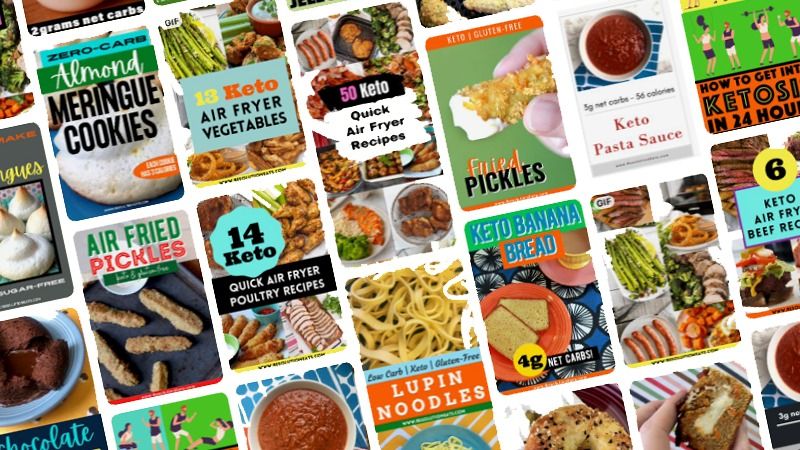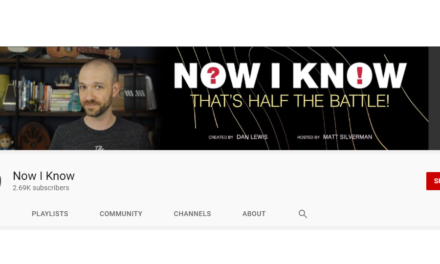Entrepreneur: Emily Krill
Biz: Resolution Eats
Tilt: Low-carb recipes
Primary Channel: Blog (150K page views per month)
Other Channels: Pinterest (2.6M monthly views; 24K followers), Instagram (14.3K)
Time to First Dollar: 2 months
Rev Streams: Website ads, sponsored posts
Our Favorite Actionable Advice:
- Fill a content gap: Emily featured low-carb recipes that she hadn’t seen on the internet and helped her keep her blood sugar under control.
- Use an ad network: Selling advertising for your content is a big task. Consider partnering with ad networks to do that work for you.
- See social media as a marketing tool: Emily never relied on social platforms for revenue. Instead, she used Pinterest to drive traffic to her blog.
The Story

About six years ago, stay-at-home mom Emily Krill had a friend who was earning $300 a month as a blogger. “We didn’t have any money at the time and thought that was a great idea,” she says. Diagnosed with Type 1 diabetes, Emily started a food blog featuring low-carb recipes she hadn’t seen on the internet that had helped her keep her blood sugar under control.
It turns out many people were looking for these recipes, too. In 18 months, Emily was making much more than $300 a month – the blog was bringing in four figures a month.
Using an ad network
When she began the blog, she used the ad management network MediaVine, which works with bloggers who have at least 50K monthly page views. Now, Emily uses AdThrive to publish ads on her Resolution Eats site.
In this screenshot, Resolution Eats hosts ads for Target, LinkedIn, and Starbucks around a recipe:

Though she liked MediaVine, she switched to AdThrive when she heard that she could make more revenue per thousand impressions (RPM). While she earned a bit more money initially, both MediaVine and AdThrive pay similar RPMs today.
With 50K page views, she earned $1K a month and now averages $3K a month with 150K page views.
Creator @EmilyKrill uses @AdThrive network on her Resolution Eats blog. Advertising revenue averages $3K a month. #CreatorEconomy #ContentEntrepreneur Share on XMarketing on Pinterest
From the very beginning, Emily has used Pinterest and never had much luck with Facebook or Instagram. She views pins as a marketing tool for her site, driving traffic from her links to her site.
However, more recently, Pinterest has updated its algorithm to prioritize idea pins (videos), which don’t allow for external links. “All of these social media platforms are making it more difficult for creators to get the traffic that they used to,” Emily explains. Even group boards that once boosted traffic aren’t as effective anymore.
Though it’s harder to market on Pinterest, Emily makes sure all her pins are beautiful and unique. “I really try and make each pin look very different from the next one. So when you look at them as a group, it’s going to look like different people have done them. And you never know what’s going to take off,” she explains.
@Pinterest is a marketing tool for @EmilyKrill to attract viewers to her Resolution Eats site. #ContentBusiness #CreatorEconomy Share on XSome of her oldest pins still bring her a lot of traffic because they’re timeless and continuously circulate on Pinterest.
Writing Resolution Eats blog
When Emily started the blog, she wrote whatever she wanted. She didn’t have a strategy and didn’t account for search engine optimization (SEO). In the last couple of years, she’s learned those ropes from blogging communities on Facebook. “The traffic from Pinterest started to go down, so I needed to find some other source of traffic.”
Emily had some early success ranking in Google results. “I accidentally had some recipes take off and never knew why. But once I understood SEO, I understood why those posts did better than others.”
She explains 10% of her recipes get 90% of the traffic. Her recipe for creamy Jell-O whip was ranking before she started implementing keywords.
On average, she writes two new recipes and updates three recipes a week.
“It’s a little discouraging when you’re writing or creating new posts because chances are people are still going to be looking for that handful of recipes that you’re popular for,” Emily says.
Optimizing the recipes
Emily hired an SEO auditor to show her how to find keywords and fixes to make on her website. Since Resolution Eats has a library of published recipes now, Emily spent time the last year updating and optimizing older posts.
“If I had started doing it from the beginning, I would be so much further ahead than I am. I sort of just lucked into having some popular recipes and wasn’t strategic about it,” she says.
@EmilyKrill knows now her early content would have done better in search rankings if she had learned and practiced #SEO then. #CreatorEconomy Share on X
In addition to incorporating keywords and other metadata, Emily submits the published article to Google Search Console to index and has seen her posts climb in rankings in as little as a day. (If you include the page in your site map, Google should automatically index it.)
About the author
Bonnie owns Word of Mouth, a content agency specializing in social media, content marketing, and editorial writing. She's written for Marie Claire, Harper’s Bazaar, Coveteur, Man Repeller, Health.com, and more. She loves wearing fanny packs and laying in the fetal position.










